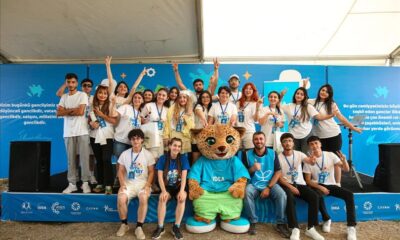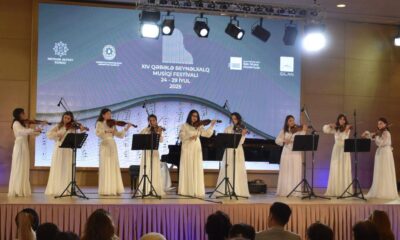Science
NMCG Approves Key Research Projects to Enhance River Management

The 67th Executive Committee meeting of the National Mission for Clean Ganga (NMCG) took place on November 17, 2025, in Delhi, where significant research projects were approved to bolster scientific river management. Chaired by Director General Shri Rajeev Kumar Mital, the meeting addressed critical issues surrounding the rejuvenation of the River Ganga, specifically focusing on pollution abatement and research initiatives.
In addition to the Ganga, the committee also highlighted the need for revitalizing the Yamuna River in Delhi. This effort will involve ensuring the safe conveyance of treated sewage to the river and providing educational outreach to school children in the region. Senior officials in attendance included Shri Gaurav Masaldan, Shri Nalin Srivastava, and other key executives from NMCG and participating states.
The Executive Committee placed a strong emphasis on research-led initiatives aimed at enhancing scientific understanding and data-driven planning across the Ganga basin. Among the approved projects are several that focus on critical areas such as monitoring Himalayan glaciers, developing a Digital Twin for the Ganga, and conducting high-resolution SONAR-based riverbed surveys.
Major Investments in Pollution Abatement and Research
One of the noteworthy initiatives is aimed at addressing pollution in West Bengal. The committee approved a project costing INR 1,361.86 crore for the Interception and Diversion of drains and the construction of Sewage Treatment Plants (STPs) along the River Mahananda in Siliguri. This project will feature 25 interception and diversion structures, four lifting stations, and two STPs with capacities of 27 million litres per day (MLD) and 22 MLD. It will be implemented through a hybrid annuity-based Public-Private Partnership model.
Additionally, the Executive Committee sanctioned the conveyance of treated sewage from the Coronation Pillar STP to the Yamuna River. This proposal aims to improve water quality in the Yamuna and contribute to the ongoing efforts of the Yamuna Action Plan. Key components of the project include constructing new pumping stations and laying down a comprehensive network of rising mains and channels.
The committee also approved a project focusing on glacier and glacier melt runoff changes in the Upper Ganga Basin, with a budget of INR 3.98 crore. This study, conducted by the National Institute of Hydrology in Roorkee, will investigate the implications of glacier retreat and changing snow cover on melt runoff, utilizing field observations and remote sensing data.
Innovative Approaches to River Management
Another significant project involves a SONAR-based bathymetric survey of the Ganga from Bijnor to Ballia, estimated to cost over INR 3 crore. This initiative will produce a high-resolution underwater topographic baseline that is essential for sediment management and long-term restoration planning under the Namami Gange programme.
The committee has also approved a Managed Aquifer Recharge (MAR) project across discovered paleochannels in the Ganga-Yamuna Doab, with an allocated budget of INR 242.56 lakh. This initiative aims to identify suitable government land for constructing MAR structures to enhance groundwater recharge.
Furthermore, a project titled “Towards Intelligent River Basin Management: A Digital Twin and Water Cycle Atlas for the Ganga Basin” was approved with an estimated cost of INR 3.31 crore. This ambitious effort aims to leverage artificial intelligence and satellite remote sensing to facilitate real-time, data-driven river management.
The committee also recognized the importance of historical data, approving the digitization and creation of a geospatial database of historical maps of the Ganga Basin for INR 2.62 crore. This project will help analyze river morphology and changes in the floodplain over time.
Lastly, the Executive Committee endorsed the “Youth for Ganga, Youth for Yamuna” initiative, which amounts to INR 39.37 lakh. This program aims to engage over 250,000 youths across around 200 schools in the Delhi-NCR region, fostering awareness and responsibility towards river conservation.
Through these strategic approvals, the Executive Committee has taken significant steps towards improving water management, enhancing monitoring systems, and strengthening scientific capabilities essential for the rejuvenation of the Ganga and Yamuna rivers.
-

 Lifestyle4 months ago
Lifestyle4 months agoHumanism Camp Engages 250 Youths in Summer Fest 2025
-

 Business4 months ago
Business4 months agoKenvue Dismisses CEO Thibaut Mongon as Strategic Review Advances
-

 Sports4 months ago
Sports4 months agoDe Minaur Triumphs at Washington Open After Thrilling Comeback
-

 Top Stories4 months ago
Top Stories4 months agoColombian Senator Miguel Uribe Shows Signs of Recovery After Attack
-

 Sports4 months ago
Sports4 months agoTupou and Daugunu Join First Nations Squad for Lions Clash
-

 Health4 months ago
Health4 months agoNew Study Challenges Assumptions About Aging and Inflammation
-

 World4 months ago
World4 months agoASEAN Gears Up for Historic Joint Meeting of Foreign and Economic Ministers
-

 Business4 months ago
Business4 months agoOil Prices Surge Following New EU Sanctions on Russia
-

 Entertainment4 months ago
Entertainment4 months agoDetaşe-Sabah Violin Ensemble Captivates at Gabala Music Festival
-

 Entertainment4 months ago
Entertainment4 months agoBaku Metro Extends Hours for Justin Timberlake Concert
-

 Business4 months ago
Business4 months agoU.S. House Approves Stablecoin Bill, Sends to Trump for Signature
-

 Top Stories4 months ago
Top Stories4 months agoRethinking Singapore’s F&B Regulations Amid Business Closures









